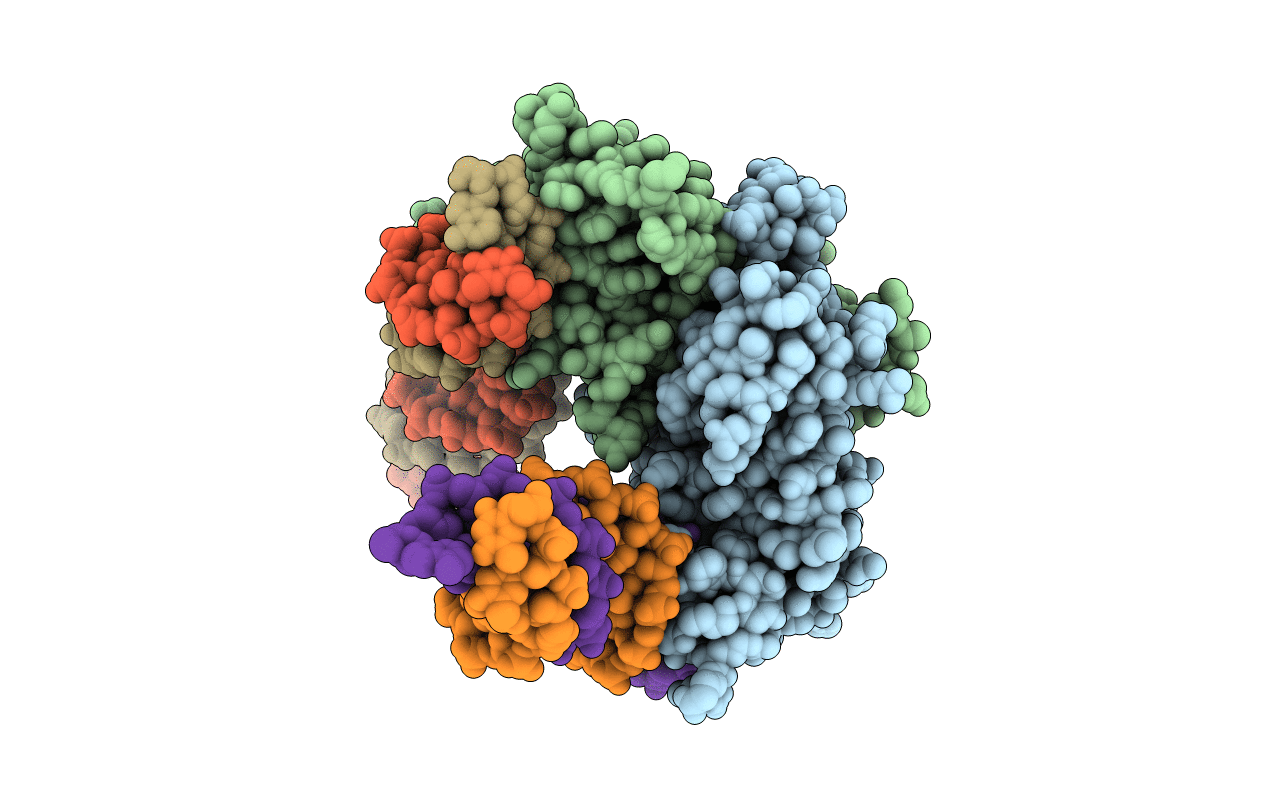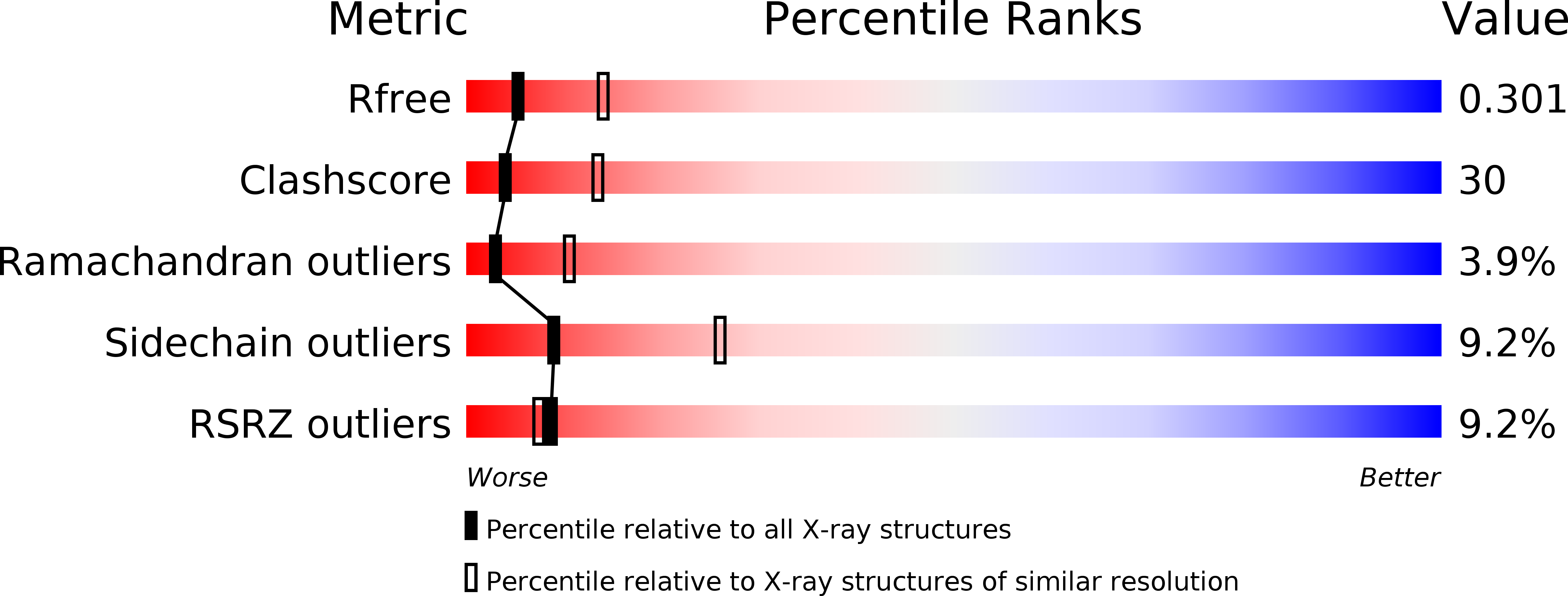
Deposition Date
2016-08-19
Release Date
2016-10-26
Last Version Date
2023-12-27
Entry Detail
PDB ID:
5T1J
Keywords:
Title:
Crystal Structure of the Tbox DNA binding domain of the transcription factor T-bet
Biological Source:
Source Organism:
Mus musculus (Taxon ID: 10090)
synthetic construct (Taxon ID: 32630)
synthetic construct (Taxon ID: 32630)
Host Organism:
Method Details:
Experimental Method:
Resolution:
2.95 Å
R-Value Free:
0.29
R-Value Work:
0.26
R-Value Observed:
0.26
Space Group:
P 61


